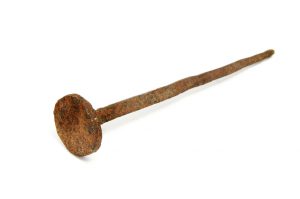Are You Trying To Remove A Rusty Fastener?
Regardless of whether it’s found on a vehicle, a commercial equipment, industrial tool or even a system made of various types of steel and iron, rusty screws and nuts will inevitably cause delays. While your first instinct might be to force it out of the socket, you should stop immediately when you notice the fastener won’t budge. Forcing it out does not only present the risk of snapping off the bolt, but you can also make matters worse, particularly if you’re not familiar with how the machine or equipment works. To remove the problematic fastener and replace it with a new screw and nut, here are 3 methods to try out.

- Use heat to expand the metal
More often than not, you can manage to break the rust bond that keeps the fastener stuck with the help of a torch. To avoid damage to your machine, you can use an oxy-acetylene or a propane torch. Regardless of the heating source available in your facility, make sure you don’t overheat the fastener.
You can determine the right temperature by performing this test: apply a small quantity of water and, if it turns to steam, the fastener is hot enough. Try to turn it with a wrench and gently tap on the head if the fastener refuses to twist. In case it’s still not loose, then reheat and cool it several times and repeat the tapping procedure to break the tension bond between the threads and the rust.

- Using cold to contract the metal
In the event the aforementioned procedure doesn’t loosen the fastener, then you should try reducing the temperature of the metal to around -60 or -72 degrees Fahrenheit with an aerosol freeze spray. Unlike heating that expands the metal, freezing can help break the tension bond by contracting the material. It is important to allow the steel or iron to warm up a bit before using a wrench to turn the fastener, otherwise you risk breaking its head. In some cases, you might need to repeat the procedure several times to get the desired results.
- When everything else fails, try mechanical action
If the fastener refuses to get loose despite repeating the heating and freezing methods several times, then it’s time to use a combination of drilling and extraction to get it out. To be more precise, you should drill a hole through the center of the bolt shank and introduce a counter-threaded extractor bit. As you turn the bit to loosen the bolt, its counter-threads tighten its grip and facilitate the extraction process.
About the Author

Started my career in the fastener world in 1969 at, Parker Kalon Corp. a NJ based screw manufacturer located in Clifton, NJ working in inventory control, scheduling secondary production and concluding there in purchasing. In 1971 I accepted a sales position at Star Stainless Screw Co., Totowa, NJ working in inside sales and later as an outside salesman, having a successful career at Star I had the desire with a friend to start our own fastener distribution company in 1980 named: Divspec, Kenilworth, NJ. This was a successful adventure but ended in 1985 with me starting Melfast in August 1985 and have stayed competitive and successful to date. Melfast serves the OEM market with approximately 400 accounts nationally.